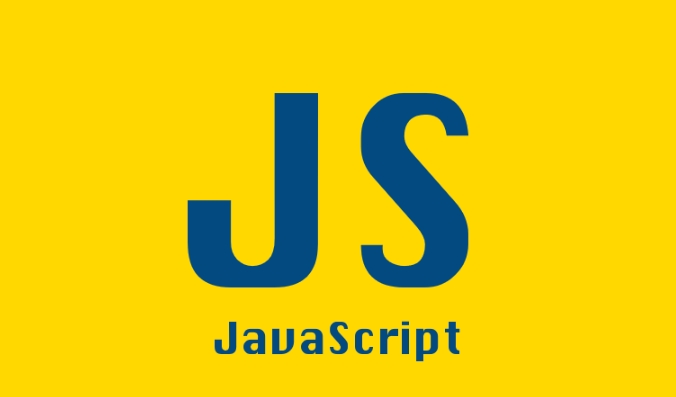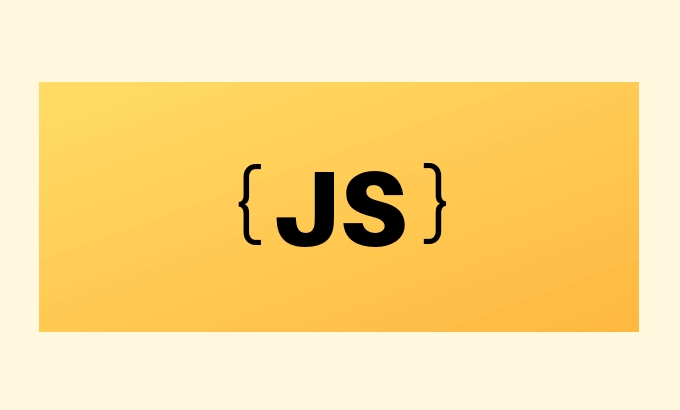Emscripten is the preferred toolchain for compiling C/C code into WebAssembly and running in the browser. 1. It is recommended to use emsdk management during installation, cloning and activating the latest version through git, and configuring environment variables; 2. After writing a simple C program, use the emcc command to compile and generate .wasm or .js files; 3. If the browser has no output, you need to add the EXPORTED_FUNCTIONS parameter and ensure that the HTML has a display container; 4. Complex projects support Makefile or CMake, and can link libraries such as SDL2; 5. Debugging is recommended to add the -g parameter to retain source code information, and performance optimization should reduce the interaction between JS and Wasm, use the -O3 optimization level to avoid frequent string conversion and JS calls.

Emscripten is a powerful toolchain that allows us to compile C/C code into WebAssembly (Wasm) and then run it in the browser. If you are trying to "mov" native C/C applications to web pages, Emscripten is almost the preferred option.

Installation and configuration: Prepare your environment
Before using Emscripten, you need to install its SDK. Officially recommended to manage through emsdk , you can download and install it from GitHub.
- Download emsdk:
git clone https://github.com/emscripten-core/emsdk.git
- Go to the directory and install the latest version:
cd emsdk ./emsdk install latest ./emsdk activate latest
Don't forget to add environment variables to shell configuration files (such as .bashrc or .zshrc ):

source ./emsdk_env.sh
If you encounter the problem that the command cannot be found, it is likely that the environment variable is not loaded correctly. You can try to resource or restart the terminal.
Compile your first C program
When you are ready for the development environment, try writing a simple C program:

#include <stdio.h>
int main() {
printf("Hello from Emscripten!\n");
return 0;
}Use the following command to compile:
emcc -s WASM=1 hello.c -o hello.wasm
This generates a hello.wasm file. You can also add -o hello.js so that Emscripten will automatically generate a JS glue file for loading and running WebAssembly.
FAQ: If you don't see the output when running in the browser, remember to add -s EXPORTED_FUNCTIONS="['_main']" and make sure there is a container in <body> in the HTML page to display the stdout output.
Handle dependencies and complex projects
For projects with multiple source files or third-party libraries, Emscripten also supports standard Makefile and CMake build methods.
For example, if you have a game project that uses SDL2, you can add the corresponding flag at compile time:
emcc -s USE_SDL=2 main.c -o game.js
At this time, Emscripten will automatically link the SDL2 web implementation. This is very useful for porting desktop applications.
But pay attention to memory limitations. By default, WebAssembly uses limited memory. If your application consumes a lot of memory, you can add parameter extensions:
-s TOTAL_MEMORY=64MB
However, modern browsers generally support larger memory by default, so this parameter may not need to be set in the new version.
Debugging and performance optimization skills
Debugging WebAssembly is not as intuitive as debugging JavaScript. It is recommended that you add -g parameter to preserve debugging information when compiling:
emcc -g -s WASM=1 your_code.c -o debug.wasm
This way you can see the original C source code under the Source tab of Chrome DevTools and set breakpoints.
There are a few tips for performance:
- Try to avoid frequent interactions between JS and Wasm, because cross-language calls are costly.
- If DOM operations are not required, try to use pure computing tasks to give full play to the advantages of Wasm.
- Use
-O3or-Ofastoptimization level to improve execution efficiency.
Sometimes you will find that the program runs slower than expected, so you might as well see if it has done a lot of string conversion or frequently called JS helper functions.
Basically that's it. Emscripten's learning curve is not steep, but to really use it well, you still have to practice it a few more times and be familiar with the construction process and common pitfalls.
The above is the detailed content of Leveraging the JavaScript Emscripten Toolchain. For more information, please follow other related articles on the PHP Chinese website!

Hot AI Tools

Undress AI Tool
Undress images for free

Undresser.AI Undress
AI-powered app for creating realistic nude photos

AI Clothes Remover
Online AI tool for removing clothes from photos.

Clothoff.io
AI clothes remover

Video Face Swap
Swap faces in any video effortlessly with our completely free AI face swap tool!

Hot Article

Hot Tools

Notepad++7.3.1
Easy-to-use and free code editor

SublimeText3 Chinese version
Chinese version, very easy to use

Zend Studio 13.0.1
Powerful PHP integrated development environment

Dreamweaver CS6
Visual web development tools

SublimeText3 Mac version
God-level code editing software (SublimeText3)

Hot Topics
 Why should you place tags at the bottom of the ?
Jul 02, 2025 am 01:22 AM
Why should you place tags at the bottom of the ?
Jul 02, 2025 am 01:22 AM
PlacingtagsatthebottomofablogpostorwebpageservespracticalpurposesforSEO,userexperience,anddesign.1.IthelpswithSEObyallowingsearchenginestoaccesskeyword-relevanttagswithoutclutteringthemaincontent.2.Itimprovesuserexperiencebykeepingthefocusonthearticl
 What is event bubbling and capturing in the DOM?
Jul 02, 2025 am 01:19 AM
What is event bubbling and capturing in the DOM?
Jul 02, 2025 am 01:19 AM
Event capture and bubble are two stages of event propagation in DOM. Capture is from the top layer to the target element, and bubble is from the target element to the top layer. 1. Event capture is implemented by setting the useCapture parameter of addEventListener to true; 2. Event bubble is the default behavior, useCapture is set to false or omitted; 3. Event propagation can be used to prevent event propagation; 4. Event bubbling supports event delegation to improve dynamic content processing efficiency; 5. Capture can be used to intercept events in advance, such as logging or error processing. Understanding these two phases helps to accurately control the timing and how JavaScript responds to user operations.
 A definitive JS roundup on JavaScript modules: ES Modules vs CommonJS
Jul 02, 2025 am 01:28 AM
A definitive JS roundup on JavaScript modules: ES Modules vs CommonJS
Jul 02, 2025 am 01:28 AM
The main difference between ES module and CommonJS is the loading method and usage scenario. 1.CommonJS is synchronously loaded, suitable for Node.js server-side environment; 2.ES module is asynchronously loaded, suitable for network environments such as browsers; 3. Syntax, ES module uses import/export and must be located in the top-level scope, while CommonJS uses require/module.exports, which can be called dynamically at runtime; 4.CommonJS is widely used in old versions of Node.js and libraries that rely on it such as Express, while ES modules are suitable for modern front-end frameworks and Node.jsv14; 5. Although it can be mixed, it can easily cause problems.
 How does garbage collection work in JavaScript?
Jul 04, 2025 am 12:42 AM
How does garbage collection work in JavaScript?
Jul 04, 2025 am 12:42 AM
JavaScript's garbage collection mechanism automatically manages memory through a tag-clearing algorithm to reduce the risk of memory leakage. The engine traverses and marks the active object from the root object, and unmarked is treated as garbage and cleared. For example, when the object is no longer referenced (such as setting the variable to null), it will be released in the next round of recycling. Common causes of memory leaks include: ① Uncleared timers or event listeners; ② References to external variables in closures; ③ Global variables continue to hold a large amount of data. The V8 engine optimizes recycling efficiency through strategies such as generational recycling, incremental marking, parallel/concurrent recycling, and reduces the main thread blocking time. During development, unnecessary global references should be avoided and object associations should be promptly decorated to improve performance and stability.
 How to make an HTTP request in Node.js?
Jul 13, 2025 am 02:18 AM
How to make an HTTP request in Node.js?
Jul 13, 2025 am 02:18 AM
There are three common ways to initiate HTTP requests in Node.js: use built-in modules, axios, and node-fetch. 1. Use the built-in http/https module without dependencies, which is suitable for basic scenarios, but requires manual processing of data stitching and error monitoring, such as using https.get() to obtain data or send POST requests through .write(); 2.axios is a third-party library based on Promise. It has concise syntax and powerful functions, supports async/await, automatic JSON conversion, interceptor, etc. It is recommended to simplify asynchronous request operations; 3.node-fetch provides a style similar to browser fetch, based on Promise and simple syntax
 var vs let vs const: a quick JS roundup explainer
Jul 02, 2025 am 01:18 AM
var vs let vs const: a quick JS roundup explainer
Jul 02, 2025 am 01:18 AM
The difference between var, let and const is scope, promotion and repeated declarations. 1.var is the function scope, with variable promotion, allowing repeated declarations; 2.let is the block-level scope, with temporary dead zones, and repeated declarations are not allowed; 3.const is also the block-level scope, and must be assigned immediately, and cannot be reassigned, but the internal value of the reference type can be modified. Use const first, use let when changing variables, and avoid using var.
 JavaScript Data Types: Primitive vs Reference
Jul 13, 2025 am 02:43 AM
JavaScript Data Types: Primitive vs Reference
Jul 13, 2025 am 02:43 AM
JavaScript data types are divided into primitive types and reference types. Primitive types include string, number, boolean, null, undefined, and symbol. The values are immutable and copies are copied when assigning values, so they do not affect each other; reference types such as objects, arrays and functions store memory addresses, and variables pointing to the same object will affect each other. Typeof and instanceof can be used to determine types, but pay attention to the historical issues of typeofnull. Understanding these two types of differences can help write more stable and reliable code.
 How to traverse the DOM tree (e.g., parentNode, children, nextElementSibling)?
Jul 02, 2025 am 12:39 AM
How to traverse the DOM tree (e.g., parentNode, children, nextElementSibling)?
Jul 02, 2025 am 12:39 AM
DOM traversal is the basis of web page element operation. Common methods include: 1. Use parentNode to obtain the parent node, and can be chained to find it upward; 2. children return a collection of child elements, accessing the first or end child elements through the index; 3. nextElementSibling obtains the next sibling element, and combines previousElementSibling to realize the same-level navigation. Practical applications such as dynamically modifying structures, interactive effects, etc., such as clicking the button to highlight the next brother node. After mastering these methods, complex operations can be achieved through combination.






